Table of Contents
The geography of Thailand is a mesmerizing amalgamation of diverse landscapes and historical significance. Situated in Southeast Asia, this nation’s geographic location has played a fundamental role in shaping its history and cultural identity.
Resting in the heart of the Indochinese peninsula, Thailand geography invites adventurous travelers with its lush jungles, picturesque islands, and fertile plains. From exploring the serene shores of Phuket to uncovering the cultural tapestry of Bangkok, Thailand’s varied landscapes and rich history offer an unforgettable journey for intrepid tourists seeking a distinct and enriching experience.
The physical geography of Thailand sketches a vision of breathtaking natural wonders. From the iconic limestone cliffs of Krabi, symbolizing the nation’s rich karst landscape, to the diverse ecosystems that span from the tropical rainforests to the fertile rice paddies, Thailand stands as a testament to nature’s magnificence.
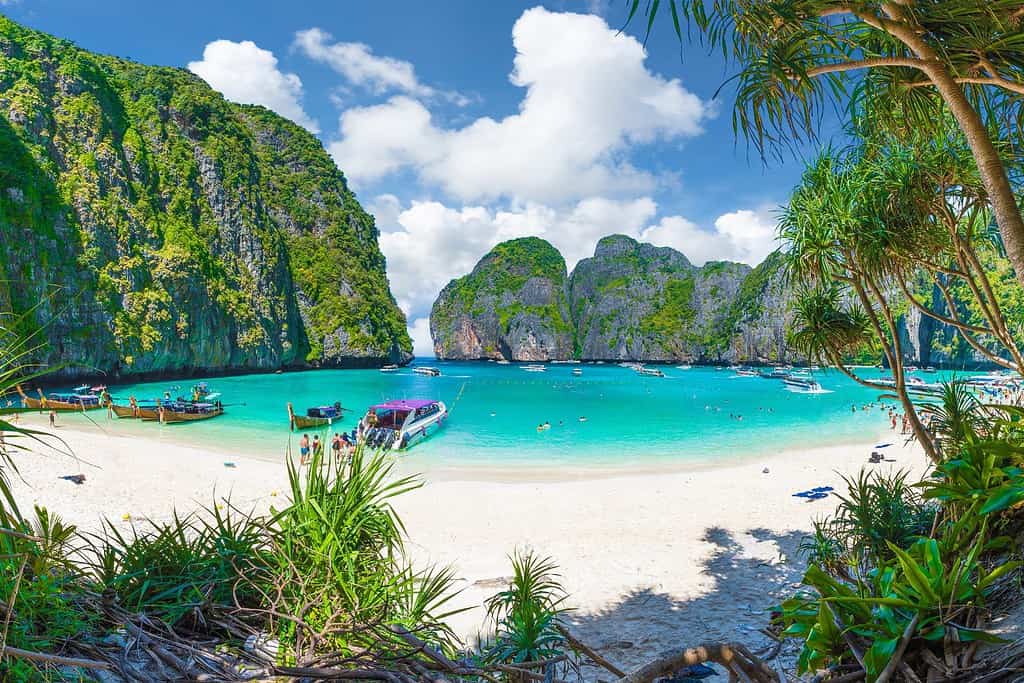
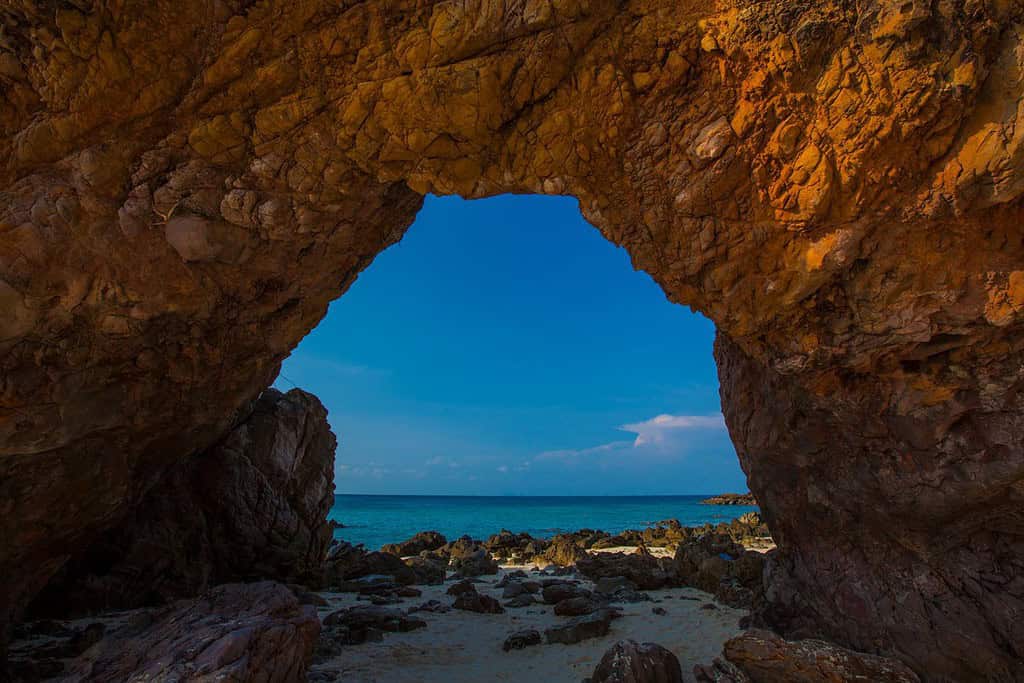
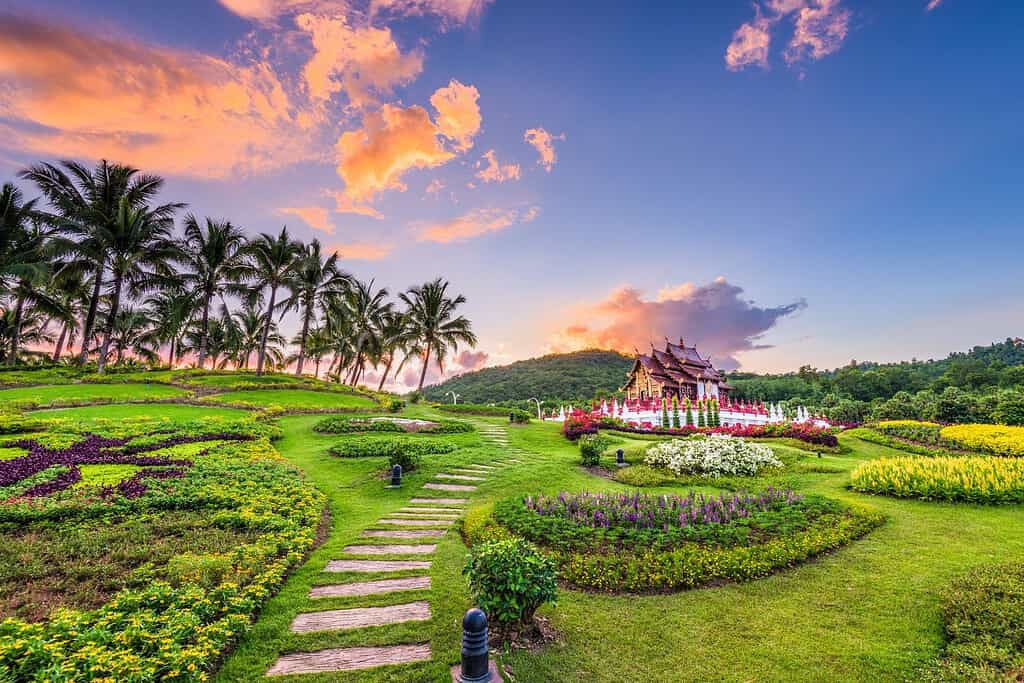
Top Geographic Features of Thailand
- Chao Phraya River: As Thailand’s major river, the Chao Phraya runs through its central plains, significantly influencing Bangkok’s topography and culture, and providing essential water resources for agriculture and everyday life.
- Andaman Sea: Located on the western side of Thailand, this body of water is renowned for its beautiful islands, like Phuket and Krabi, and is a key location for tourism and fishing.
- Isan Plateau: Spanning the northeastern region of Thailand, this plateau is crucial for the country’s agriculture, especially rice farming, and is home to distinct cultural traditions.
- Gulf of Thailand: This body of water lies on the eastern side of the country, with popular coastal towns such as Pattaya and Hua Hin dotting its shores, serving as major tourist destinations.
- Similan Islands: Situated in the Andaman Sea, this archipelago is renowned for its diving spots and unique marine biodiversity.
- Northern Mountains: Ranging across the northern part of Thailand, these mountains are home to many ethnic hill tribes and play a role in the country’s cooler climate regions.
- Khao Sok National Park: Located in the south, this park is famous for its dense rainforests, limestone karsts, and Cheow Lan Lake, offering a unique eco-tourism experience.
- Mekong River: Marking Thailand’s northeastern border with Laos, this significant river plays an essential role in trade, transportation, and local cultures.
- Ayutthaya Historical Park: Situated in the central region, this park contains the ruins of the ancient city of Ayutthaya, showcasing Thailand’s rich historical and cultural heritage.
- Golden Triangle: Found in the northernmost point where Thailand meets Laos and Myanmar, this region is historically associated with opium trade but has become a tourist attraction in its own right due to its unique cultural blend and beautiful landscapes.
These geographic features play a crucial role in shaping Thailand’s landscape, climate, and cultural history, making them essential elements in defining the country’s geography.
Thailand Geography
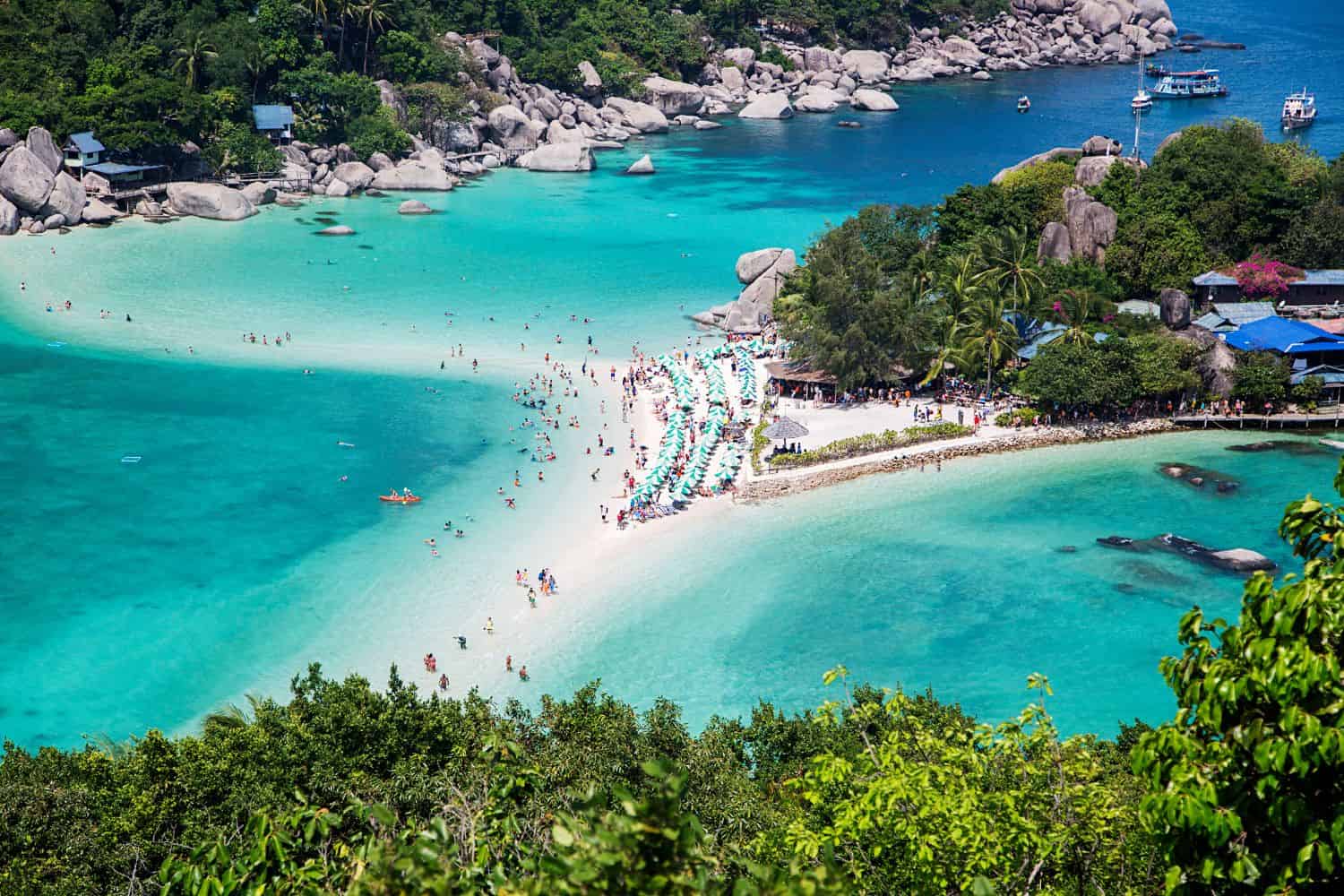
Exploring the Thailand National Geographic canvas reveals a magnificent assortment of geographic features. From the towering peaks of the Northern mountains to the idyllic beaches of the Southern islands and the bountiful rice fields of the Central plains, the nation showcases an alluring mosaic of natural wonders.
- Mountain Ranges – The Crown of Diversity: Similar to documentaries that often highlight majestic mountain ranges, Thailand is home to the awe-inspiring ranges of the North, such as the Doi Inthanon. These towering heights not only contribute to the nation’s picturesque vistas but also harbor a unique biodiversity and have played a pivotal role in its cultural essence.
- Lakes – A Kaleidoscope of Colors: Thailand’s Khao Sok National Park, with its enchanting Cheow Lan Lake, resembles the scenic vistas captured in photographs. These pristine waters, surrounded by lush jungles and limestone cliffs, underline the region’s geological allure.
- Rice Fields – Verdant Plains of Sustenance: Just as documentaries showcase vast landscapes, Thailand’s Central Plains boast rolling rice fields that support diverse ecosystems. This fertile land narrates tales of farming traditions and the nation’s agricultural expertise.
- Historical Sites – Unveiling the Past: Thailand’s historical sites, like the ancient city of Ayutthaya, bring to life tales of voyages that delve into age-old kingdoms. These remnants stand as testament to the nation’s rich cultural legacy.
- Ethnic Diversity – A Cultural Melting Pot: Parallel to the National Geographic emphasis on diverse cultures, Thailand is a blend of ethnic groups, including the Thai, Lanna, and the hill tribes. Each group enriches the nation with distinctive traditions, languages, and rituals, crafting a lively cultural patchwork.
- Wildlife – A Sanctuary for Nature: Thailand’s protected areas, such as the Khao Yai National Park, mirror the focus on wildlife preservation. These zones act as pivotal sanctuaries for varied species, upholding biodiversity in a diverse setting.
- Geological Marvels – A Natural Showcase: The nation’s geological wonders, like the Phang Nga Bay’s limestone karsts, exhibit Thailand’s intrinsic beauty amidst its turquoise seas. Such formations manifest the dramatic influences of nature in action.
- Remote Exploration – Uncharted Territories: The secluded areas of the Isaan region beckon explorers, reminiscent of journeys into unknown realms. This vast territory presents an insight into untouched terrains and singular ecosystems.
Thailand geographic features are accentuated by the significant presence of its Northern mountain ranges. These imposing heights, which sprawl across the Northern part of the country, frame a captivating panorama for the nation’s varied landscape. The ancient Silk Road, a crucial trade pathway, meanders through these impressive mountains, linking regions of Asia.
Serpenting gracefully through Thai terrain are the life-sustaining rivers like the Chao Phraya and the Mekong River, indispensable for farming and irrigation. In addition, the scenic beaches of the Andaman Sea and the Gulf of Thailand augment the nation’s distinct geography.
Thailand Geographic Location
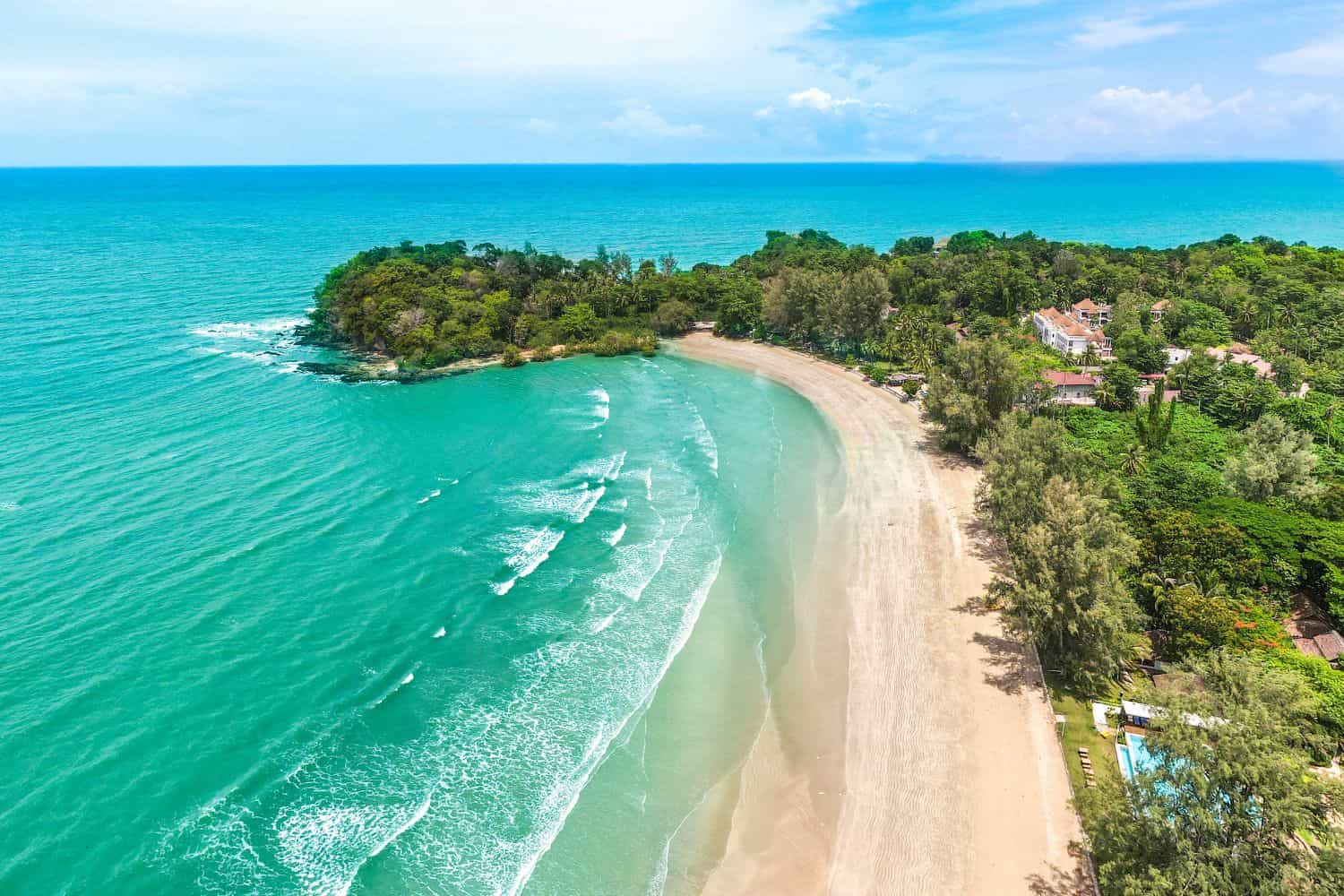
Thailand geographic location is very strategic, and its position has played a significant role throughout history. Located in the heart of Southeast Asia, the country has been a nexus for trade, culture, and ideas, emphasizing its historical importance.
Borders of Thailand
Thailand shares borders with four countries. Here is Thailand physical geography with the neighboring countries and the approximate total length of each border:
- Myanmar: The border between Thailand and Myanmar is approximately 2,416 kilometers long, making it the longest international border for Thailand.
- Laos: The border between Thailand and Laos is approximately 1,845 kilometers long.
- Cambodia: The border between Thailand and Cambodia is approximately 803 kilometers long.
- Malaysia: The border between Thailand and Malaysia is approximately 506 kilometers long.
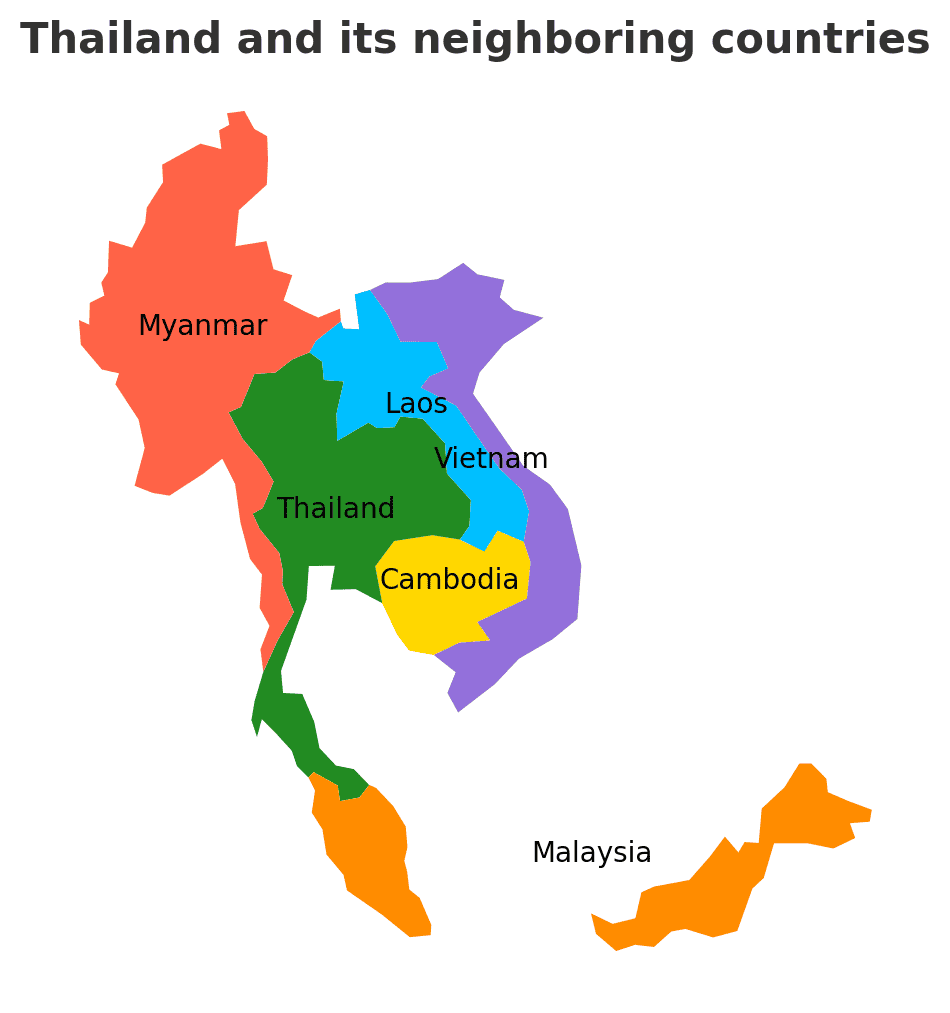
| Thailand Neighboring Country | Border Length (Approximate) |
|---|---|
| Myanmar | 2,416 kilometers |
| Laos | 1,845 kilometers |
| Laos | 803 kilometers |
| Malaysia | 506 kilometers |
These international borders define Thailand’s connections to different regions and contribute to the country’s geopolitical significance as a crossroads between Southeast Asia and the Indochinese Peninsula.
Geography of Bangkok Thailand
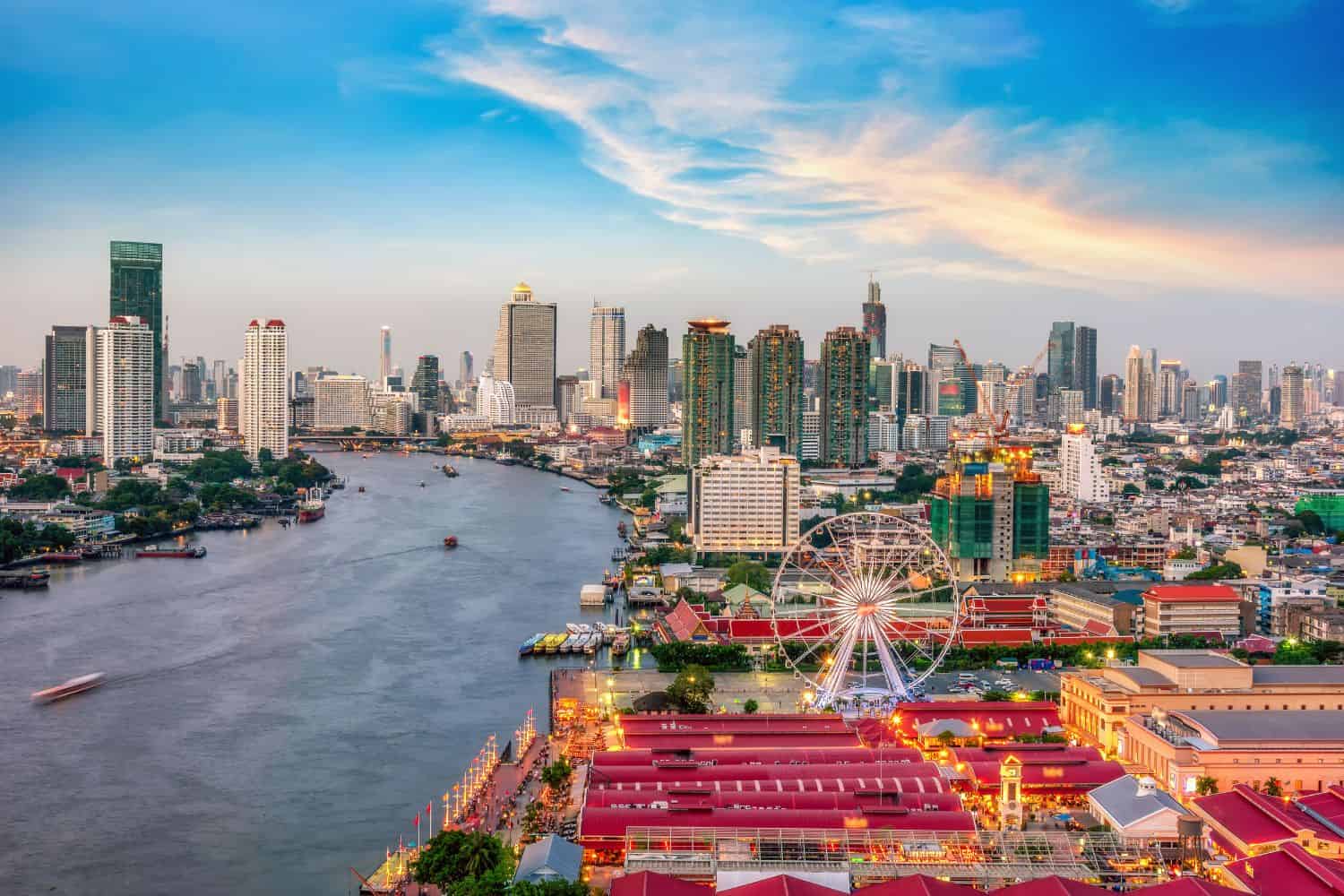
As the capital city of Thailand, Bangkok is a mesmerizing microcosm of the country’s human geography. Here, various ethnic groups, including Thais, Chinese, Malays, and Burmese, coexist, contributing to the city’s dynamic cultural mosaic.
Bangkok, the capital city of Thailand
- City of Contrasts: Bangkok is known for its vivid contrasts, where sleek skyscrapers coexist with traditional floating markets, creating a harmonious blend of old and new.
- Chao Phraya River: The Chao Phraya River weaves through the city, playing a crucial role in its trade and transportation.
- Bangkok’s Elevation: The city is situated close to sea level, with expansive floodplains surrounding it.
- Green Spaces: Bangkok is home to numerous picturesque parks and gardens, including Lumphini Park, providing a peaceful refuge in the heart of the bustling metropolis.
- Bangkok’s Historical Significance: With a history deeply intertwined with the Ayutthaya and Rattanakosin eras, Bangkok has seen various periods and has been a central figure in Southeast Asian politics and commerce.
- Diverse Architecture: The city boasts a varied architectural legacy, reflecting influences from traditional Thai, Chinese, and modern designs.
- Traditional Dance and Music: Bangkok is renowned for its traditional Thai dance and music, which resonates and captivates audiences throughout the city.
- Grand Palace: The historic Grand Palace, located at the city’s core, stands as an iconic representation of Thailand’s royal history.
- Bangkok’s Economy: The city acts as Thailand’s economic and cultural nexus, drawing people from all over the nation in search of opportunities and learning.
- Population Growth: Bangkok has witnessed consistent population expansion, with a notable influx of migrants from various provinces and neighboring countries, resulting in urbanization and infrastructure concerns.
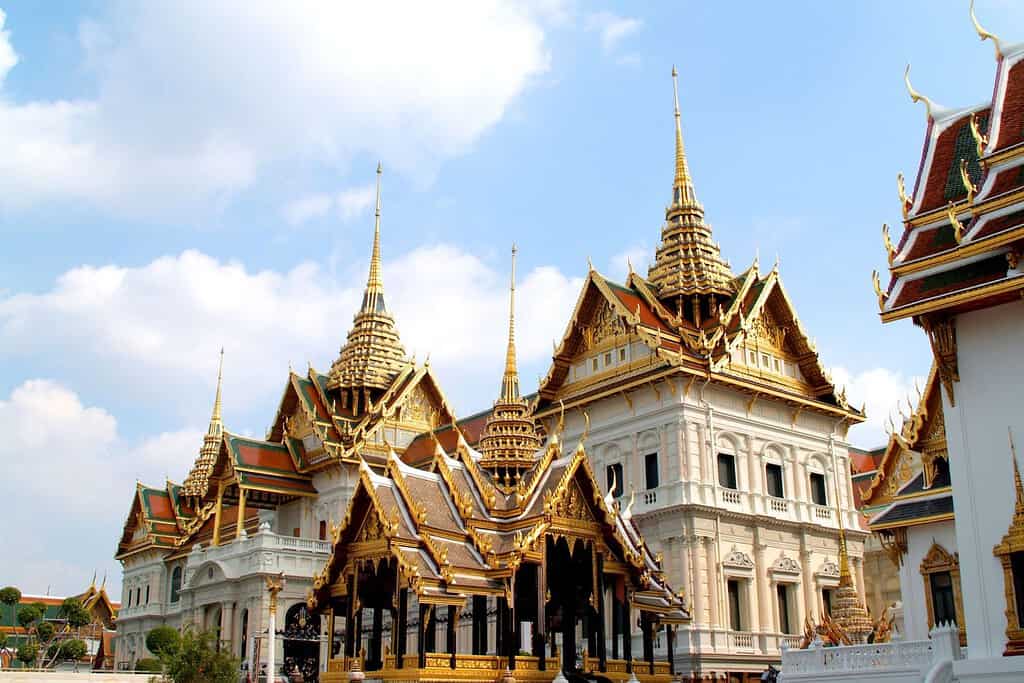
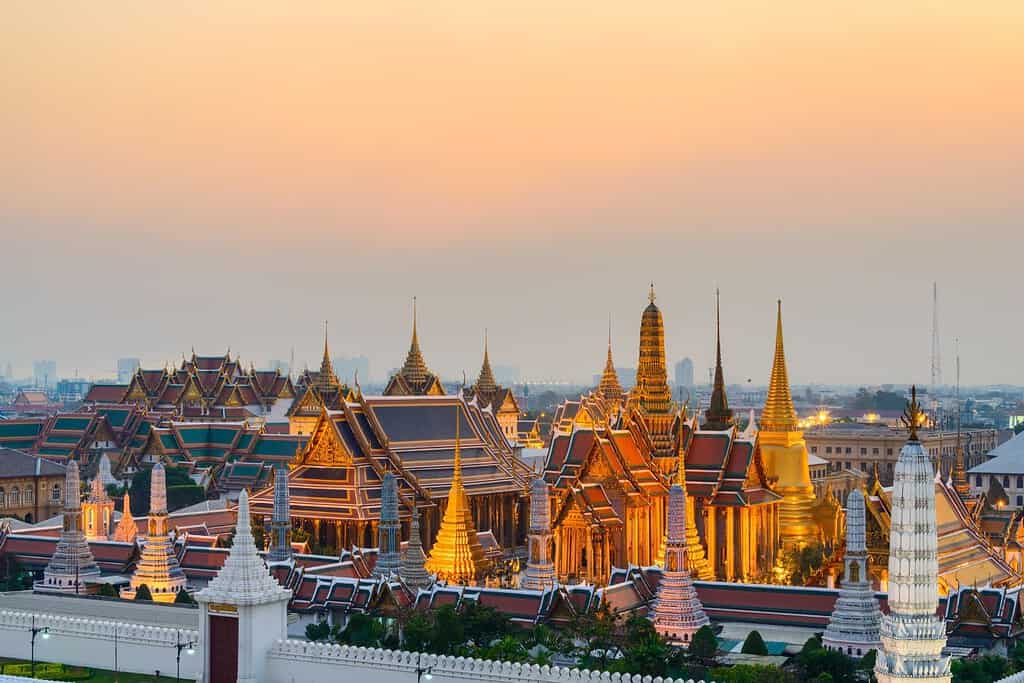
Historical Geographical Importance of Thailand
Throughout the ages, Thailand’s geographical significance has made it a sought-after stage for historical drama. As empires and nations rose and fell, from the Khmer to the Burmese and European colonizers, Thailand geographic position played a pivotal role in shaping the world’s history.
- Strategic Crossroads: Thailand’s location as a crossroads between the cultural spheres of India and China has made it a strategic point for trade, cultural exchange, and military endeavors throughout history.
- Ancient Trade Routes: The ancient maritime trade routes passed through Thailand, connecting various kingdoms and facilitating the exchange of goods, ideas, and cultures.
- Ayutthaya Kingdom: Thailand was a central territory during the rise of the Ayutthaya Kingdom, which was one of the wealthiest and most powerful kingdoms in Southeast Asia.
- Wars and Kingdoms: Throughout the centuries, Thailand faced invasions from neighboring kingdoms but managed to retain its sovereignty, establishing a rich history of resilience and diplomacy.
- European Influence: Although Thailand remained uncolonized, its geographic position attracted significant European interest, leading to treaties, trade, and cultural exchanges in the 19th and 20th centuries.
- Influence of Indigenous Kingdoms: Thailand was home to various powerful kingdoms, including the Sukhothai and Lanna, influencing its early history and culture.
- Thai and Khmer Dynasties: The ebb and flow of power between Thai and Khmer dynasties had a profound impact on Thailand’s history, resulting in a blend of cultures and architectural marvels.
- Thai Cuisine and Culture: The fertile plains of Thailand, especially the Central Plains, and the Mekong Delta have been centers of rice cultivation, contributing to the rich and diverse Thai cuisine that is celebrated worldwide.
- Influence of Buddhism: Thailand’s deep-rooted Buddhist traditions have greatly influenced its culture, arts, and architecture, making it a global center for Buddhist studies.
The geographical position of Thailand, nestled in the heart of Southeast Asia, is a vibrant tapestry of cultural richness and natural beauty. Known for its lush landscapes, picturesque beaches, and bustling cities like Bangkok, Thailand is a land of contrasts. Its unique culture, influenced by Buddhist traditions and a rich history of kingdoms and empires, is evident in its ornate temples, palaces, and culinary delights.
In conclusion, Thailand’s geographical location has been instrumental in shaping its history and cultural identity. As a nation never colonized by European powers, it has maintained a distinct cultural heritage. Strategically located between India and China and bordering the Andaman Sea and the Gulf of Thailand, it has been a significant player in regional trade and cultural exchanges in Southeast Asia. Today, Thailand continues to play a vital role in the geopolitics and economy of the ASEAN region.
More About Thailand
[the-post-grid id=”50434″ title=”Thailand Main page”]
